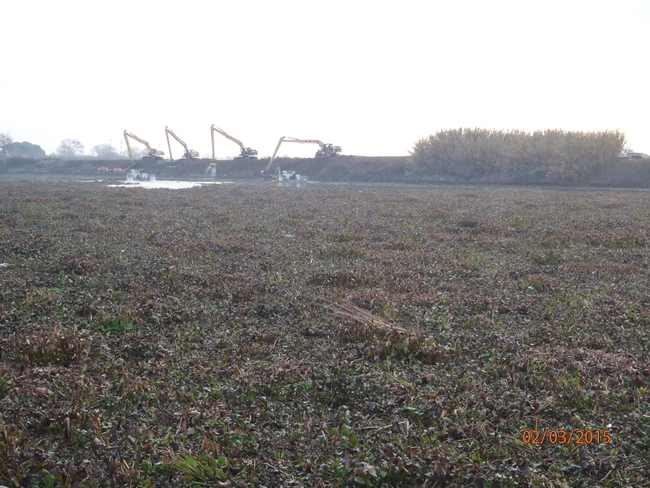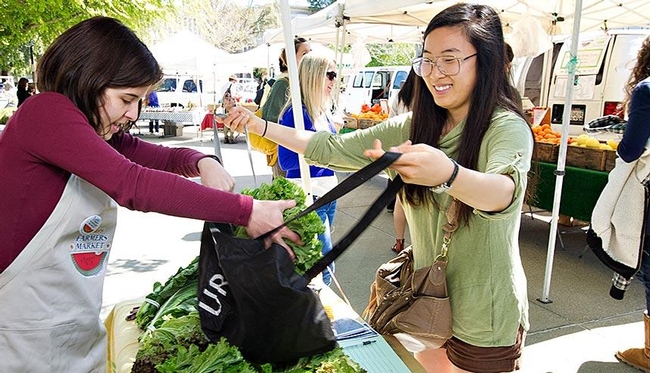
Posts Tagged: Markets
The Meaning of the Brexit Breakdown
I know I pull too much from the Wall Street Journal, but I just can't not share this beautifully phrased paragraph that distills current political streams and what they could mean for the continuing integration of markets and labor across international borders.
Think here about the expansion of export markets for California produce and our continuing need for people to do the work of agriculture, many of whom come from outside of the US.
"But the economic benefits of integration must be weighed against the political loss of sovereignty. You could almost certainly integrate the entire world economically and achieve massive economies of scale and integration. Efficiencies in product, service and labor markets would improve productivity and generate higher overall income levels. But most people in the world wouldn't tolerate the political implications, including free mass integration and steady erosion of cultural identities through universally applied regulations." - Gerard Baker, "The Great Brexit Breakdown", Wall Street Journal, Dec 8, 2018.
My take? If one views the current political state of many of the world's well developed and internationally integrated economies through the lens of the preceding paragraph, a lot of what is happening right now makes sense. With this in mind, the question which follows then would be are we at this time striking the political upper limit to the integration of markets and labor across international borders?
How aquatic weeds affect costs to the U.S. Bureau of Reclamation
The U.S. Bureau of Reclamation (BOR) is one of the agencies responsible for operating a facility...

Extent
Direct-marketing farms have double the regional impact
Sacramento-area farmers and ranchers who sell their products directly to consumers generate twice as much regional economic impact per dollar of output as do area food producers who don't engage in direct marketing, reports a UC Davis agricultural economist and a team of UC Cooperative Extension researchers.
The newly released study of the four Sacramento region counties of El Dorado, Placer, Sacramento and Yolo found that direct-marketing food producers had a regional output multiplier of 1.86 compared to just 1.42 for producers not involved in direct marketing.
Direct-marketing channels include farmers markets, roadside farm stands and community-supported agriculture programs that provide consumers with regular deliveries of farm products.
“The direct marketers make up a relatively small part of the Sacramento region's agricultural sector, but this study demonstrates that these food producers generate both economic and qualitative benefits for the region,” said study leader Shermain Hardesty, a UC Cooperative Extension specialist in the UC Davis Department of Agricultural and Resource Economics.
“It's important that the economic contributions of direct-marketing farmers and ranchers be taken into consideration so that regional policies can be enhanced to support and nurture the growth of these food producers,” Hardesty said.
The regional economic impacts identified in the study are threefold: revenue received directly by the agricultural producer; a ripple effect when the food producer purchases inputs in the region; and a secondary ripple when the producer and the suppliers of goods and services to the producer, in turn, spend more money in the region on household goods and services.
The report, along with separate economic impact reports specifically for El Dorado, Placer and Yolo counties, is available online.
Sacramento region direct marketers
In the four-county Sacramento region, direct-marketing food producers are a relatively small segment of the total agricultural sector, accounting for 19 percent of the region's farms and only 4 percent of its agricultural production.
The direct-marketing farm operations tend to be smaller and more labor-intensive, and source more of their inputs locally than do nondirect-marketing operations in the area.
The new study was based on economic information gathered from 88 local farmers and ranchers, including 31 vegetable farmers, 48 orchard or vineyard growers and nine livestock producers, each of whom generated at least $1,000 in annual sales from marketing directly to consumers.
After the data were collected, they were incorporated into an economic modeling program to estimate the economic impacts of producers engaged in direct marketing.
Study highlights
Other findings from the report include:
• Sacramento region direct-market producers averaged just $164,631 in one year of sales compared to $568,105 for those not engaged in direct marketing.
• Seventy-three percent of the direct marketers also sold through wholesale channels.
• Overall, the direct-market producers generated 44 percent of their total revenues through direct-marketing channels, 55 percent through wholesale channels and 1 percent through commodity markets.
• For every $1 million of output, the direct-market producers generated a total of 31.8 jobs in the Sacramento region while the nondirect-market producers generated only 10.5 jobs.
• Direct marketers purchased 89 percent of their inputs within the region while the nondirect-market producers purchased 45 percent of their inputs in the region. This local sourcing of inputs was the primary factor responsible for the direct-market producers having a greater economic impact on the region than nondirect-market producers.
Collaborators and funding
Hardesty collaborated on the study with Libby Christensen, Erin McGuire and Gail Feenstra, all of UC Davis; and Chuck Ingels, Jim Muck, Julia Boorinakis-Harper, Cindy Fake and Scott Oneto, all with the UC Cooperative Extension.
Funding for the study was provided by the University of California Division of Agriculture and Natural Resources Competitive Grants Program.
International trade important to California agricuture

The vice president of UC Agriculture and Natural Resources, Glenda Humiston, was a speaker at the summit. She said UC has calculated that 1.2 million California jobs are tied to the state's natural resources - including agriculture, fishing, mining, recreation and renewable energy. Humiston predicted there will be 300,000 more jobs in this sector over the next five years.
However, the pool of workers for the jobs is diminishing because young people in Mexico and Central America, who often fill these positions, are increasingly able to find better paying, less taxing jobs elsewhere.
"There's going to be massive upheavals in the system," Humiston said.
The article noted that nearly every industry leader at the summit stressed the importance to California agriculture of the Trans-Pacific Partnership, a trade deal involving the U.S. and 11 other Pacific Rim nations.
Workshops aim to boost local and regional food businesses with federal grants

The workshops are designed to help potential applicants understand, develop and submit federal grant applications for the Farmers Market and Local Food Promotion programs. The 2014 Farm Bill reauthorized this program, which will provide $30 million in grants each year through 2018. The funds will be divided between the Farmers Market Promotion Program and the Local Food Promotion Program.
The workshop instructor is Jennifer Sowerwine, a UC ANR specialist based at UC Berkeley whose research and extension is focused on development of equitable, economically viable and culturally relevant food systems in metropolitan areas.
“The workshop is open to anyone interested in connecting agricultural producers and consumers through local food systems,” Sowerwine said. “This is a great opportunity to strengthen the local economy, support small-scale farmers, and make fresh, healthy food more accessible to the community.”
The workshops are a collaborative effort involving UC ANR, USDA and Regional Rural Development Centers. They will run from 9 a.m. to 2 p.m. as follows:
April 8 - Berkeley. 155 Kroeber Hall at UC Berkeley
April 10 - Modesto. Stanislaus County Ag Center, 3800 Cornucopia Way, Modesto
April 15 - Davis. UC ANR Building, 2801 Second St., Davis
April 22 - Redding. North Valley Catholic Social Services, 2400 Washington Ave., Redding
Each of the workshops will provide an overview of the grant programs and help in developing project ideas, preparing the proposal and completing the application. All applications much be submitted by 11:59 p.m. Eastern May 14. Sowerwine suggests applicants start the application process as soon as possible to ensure they meet the deadline. To apply, go to http://www.grants.gov. Questions about the process will be addressed at the workshop.
Registration is $10 and includes lunch, training materials and resources. The agenda, details and online registration are on the web at http://ucanr.edu/sites/localfoodpromo. For more information about the program, contact Jennifer Sowerwine at (510) 664-7043, jsowerwi@berkeley.edu. For information about workshop logistics, contact Alex Zabelin, (530) 750-1259, or Saundra Wais, (530) 750-1260, or email anrprogramsupport@ucanr.edu.
The University of California Global Food Initiative aims to put the world on a path to sustainably and nutritiously feed itself. By building on existing efforts and creating new collaborations among UC's 10 campuses, affiliated national laboratories and the Division of Agriculture and Natural Resources, the initiative will develop and export solutions for food security, health and sustainability throughout California, the United States and the world.

